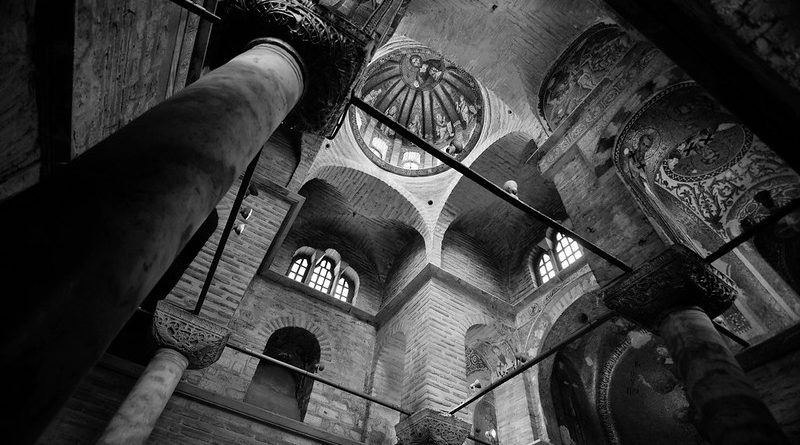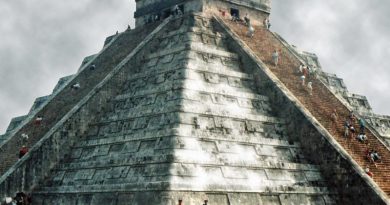Important Historical Sites of the Roman Empire
The Battle of Alesia, Alesia
One of the most important military conflicts in the history of the Roman Empire, the Battle of Alesia took place in 52 BC. One of the defining military successes of Julius Caesar’s army, his victory saw the Roman seizure of Gaul as Casear overcame the Gallic leader Vercingetorix. Roman victory marked the end of the Gallic Wars and a critical moment in the expansion of the Empire. It is considered a prime example of siege warfare. While the specific location of the site is unknown, it is believed by many historians to have taken place on Mount Auxois. The Battle of Alesia is a defining aspect of Caesar’s legacy as a military leader and by extension the supremacy of the Roman Empire
The Forum, Rome
One of the most iconic sites in the ancient and modern capital city of Rome, the Forum can be considered the most important. The building functioned as the epicentre of Roman political, judicial, cultural and commercial life. The Forum served as the backdrop for trials, political debates, speeches and even forms of entertainment such as gladiatorial combat. Many of the city’s other important buildings were located near the building due to its fundamental importance to Ancient Rome. As the Empire progressed, its functions became increasingly decentralised and moved elsewhere. Regardless, The Forum remains arguably the most historically significant government complex of all time.
Merida Theatre, Merida
The most important Roman historical site in modern-day Spain, the Roman Theatre of Merida dates back to around 15 BCE. Situated in the Roman city of Emerita Augusta, the capital of the Roman province of Lusitania, the Theatre was commissioned by Vispanius Agrippa, an important statesman of the Empire. An important cultural centre in the city, the Theatre fell into disuse and decline as the Empire fell in Late Antiquity. The ruins became buried beneath the earth for centuries, excavated in the early twentieth century, with renovations occurring thereafter. It remains the city of Merida’s most popular tourist attraction and the most enduring physical legacy of the Roman Empire in Spain.
Circus Maximus, Rome
One of Rome’s most iconic archaeological sites, the Circus Maximus is also one of the most important cultural insights into the culture of the Roman Empire. Big enough to accommodate 150,000 spectators, the Circus Maximus was the prototypical mass entertainment venue, its primary function being an arena for chariot racing. While it also served as the backdrop for other Ludi (games), it is for chariot racing that it is most well-known. Falling into a state of decline during the 6th Century, the structure was plundered for building materials. Despite this, significant remnants of the Circus Maximus remain intact and the area functions as a park and concert venue, remaining an arena of entertainment nearly two thousand years after its construction.
Maison Caree, Nimes
One of modern-day France’s most notable Roman relics, the Maison Carree in the Southern city of Nimes was built in 2 AD and remains intact in the present day. The building functioned as a temple, and is considered to be one of the most well-preserved examples of Vitruvian architecture. Although the Maison Career fell into decline as many Roman structures did, the advent of archaeology over the past few centuries have seen the building restored significantly. Many neoclassical buildings are known to have been inspired by its design, most notably the Virginia State Capitol in the United States.
Colosseum, Rome
The city’s most recognisable structure and symbol, the Colosseum was built between 72 and 80 AD under the orders of Emperor Vespasian. It is the biggest and most significant amphitheatre ever built, and along with the Circus Maximus, was the main centre of entertainment in Ancient Rome. The Colosseum’s capacity was around 80,000. The site was the venue for several forms of entertainment, often bloodthirsty ones. These included gladiatorial combat, animal hunts, mock battles and most chillingly, public executions. The Colosseum provides a hugely significant insight into Ancient Roman cultural life. Despite falling into disuse and sustaining damage through vandalism and natural disasters, the Colosseum remains the most recognisable physical symbol of Ancient Rome and modern-day Italy in addition to an important historical and cultural document.
Arch of Titus, Rome
Another important archaeological relic in the centre of Rome, the Arch of Titus was built around 82 AD under the orders of Emperor Domitian following his older bother Titus’ A commemoration of the Emperor and his military victories such as the Siege of Jerusalem, the Arch can be considered the prototypical example of Triumphal Arches, which have become increasingly popular in the past few centuries such as the Arc de Triomphe in Paris. Not only one of Ancient Rome’s most enduring symbols, the Arch of Titus is also an important reminder of the civilisation’s immense architectural legacy.
Pantheon, Rome
One of Rome’s most iconic and best-preserved buildings, the Pantheon was built between 113 and 125 AD. The building is considered to be one of Ancient Rome’s most significant architectural accomplishments, featuring the world’s largest unreinforced concrete domes. Unlike many Roman buildings, the Pantheon has been in continuous use since its construction. Originally a Hellenic temple, the Pantheon was converted into a Catholic church around the 7th Century following the Empire’s adoption of Christianity. Its design, though unique at the time, has set the template for several works of neoclassical architecture in the modern era.
Pont du Gard, France
Arguably France’s most significant Roman archaeological site, the Pont du Gard is also the most iconic Roman aqueduct still intact today. The highest elevated Roman aqueduct, the Pont du Gard is one of the few major Roman sites which remained intact and functional following the Empire’s collapse. Since the 18th Century, the Pont du Gard has been a popular tourist site, remaining one of France’s most iconic destinations. In addition to being the most recognisable physical legacy of the Roman Empire in France, the Pont du Gard is also perhaps the best reminder of the Empire’s innovations in infrastructure, one of its most important contributions to mankind.
Baths of Caracalla, Rome
Built in the early third century, the Baths of Caracalla are amongst the most iconic of Rome’s public baths. They were functional for around 300 years, falling into disrepair around 530 AD, never to recover. Although not the biggest or most well-known of the Roman public baths, the Baths of Caracalla are a popular tourist site in the present day, in part due to their important architectural influence. Buildings as diverse as Pennsylvania Station in New York and the Baths of Diocletian in Rome are notable examples of buildings influenced by the Baths of Caracalla.
Arch of Constantine, Rome
Constructed in the fourth century under the commission of the Roman Senate as a commemoration of Emperor Constantine and his military victories, the Arch of Constantine is one of the world’s most recognisable triumphal arches. The Arch is considered to be a work of collage, drawing from a number of monuments built centuries prior to its construction.




